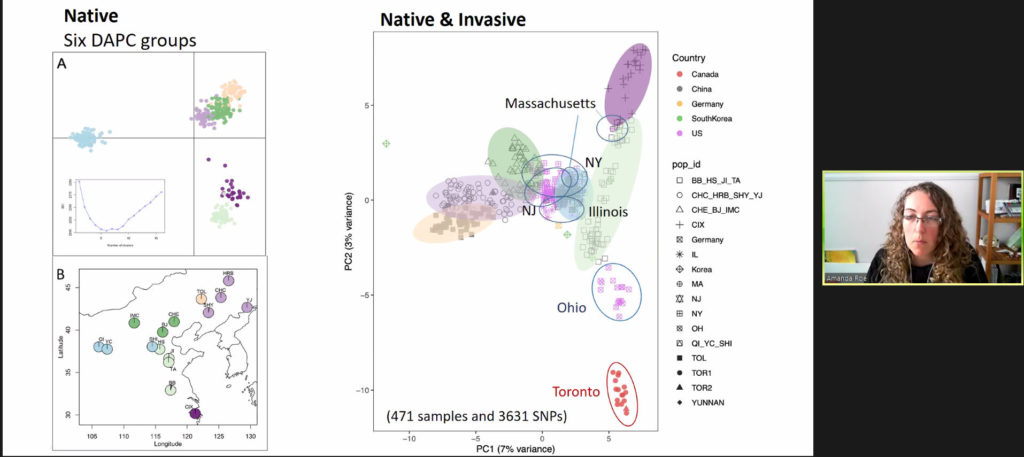In 2003, a humble cargo pallet set off a 17-year battle that struck at the heart of the Canadian identity. Larvae of the Asian Longhorn Beetle had emerged from their slumber deep inside the cheap timber and found their way into maple trees in Vaughan, Ontario, just a short distance from Toronto, the home of the Maple Leafs.

Dr. Amanda Roe is a researcher in molecular and functional ecology at Natural Resources Canada’s Great Lakes Forestry Centre, and a part-time lecturer at Algoma University in Sault Ste. Marie, Ontario. Dr. Roe lectured on 3 March during Algoma U Research Week 2021 on the work scientists around the world are doing to control the spread of the Asian Longhorn Beetle, a species native to Asia that is a pest in Europe and North America.
Though Asian Longhorn Beetles are seldom seen on the bark of trees, the distinctive holes they make as they burrow through the tree, plus their fairly large size (~35mm) and their speckled body colour makes their presence fairly easy to spot. The beetle populations are also reasonably slow-moving, reproducing only once per year. This allows the relevant authorities – in this case, the Canadian Food Inspection Agency and Natural Resources Canada – to simply ban firewood movement in the area, identify affected trees, then cut down and burn any nearby tree the beetle might inhabit.
But where, precisely, are these beetles coming from? Molecular ecology makes it possible to go a step farther, and identify the home area that invasive species may have come from. Scientists do this by looking at mitochondrial DNA (mtDNA). Unlike nuclear DNA, mitochondrial DNA does not change due to an individual’s parents, but mtDNA does accumulate distinctive variations that can identify members of the same extended family or region.
Scientists have collected an mtDNA database of Asian Longhorn Beetles across their home range in China and Korea, a database that shows distinct geographic variations. So, when the same mtDNA tests are done on a captured beetle from an invasive infestation, the tests can help identify which general region the invader is from. The infestation in Vaughan likely originated from coastal regions of northeastern China or Korea.
Perhaps more importantly, it can help researchers pick up the pieces when initial control measures were ineffective. After the Vaughan invasion had been largely controlled, there was another outbreak of ALB in Mississauga. mtDNA tests showed that the second site was a satellite of the original invasion from Vaughan.
mtDNA can’t do everything, of course: a CSI-style trackback from mtDNA data, leading to a particular shipment or pallet supplier, is science fiction, partly because very few warehouse workers actually catch a beetle in the act of wriggling free. As plastic or metal replacements are also fairly expensive, the simple, cheap solution to the pallet problem is heat treatment and an ISPM-15 stamp.
Following a generation-long struggle that concluded with five years of carefully looking through trees in Toronto and Mississauga for any re-emergence of the pest, CFIA finally declared Ontario to be free of the Asian Longhorn Beetle in June 2020. Early detection makes all the difference in preventing future outbreaks of any invasive species, and members of the public can always help by sharing photos and samples of strange insects they find with agricultural extensions, forestry agencies, or research biologists.
